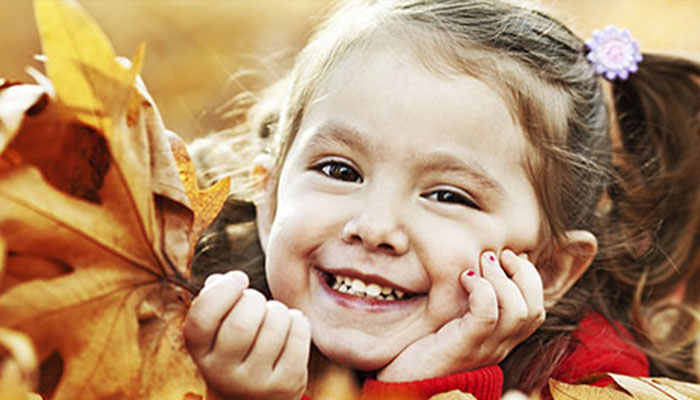While we believe that the books and resources recommended may be of value to you, keep in mind that these are suggestions only and you must do your own due diligence to determine whether the materials are appropriate and suitable for your use. PNC has no sponsorship or endorsement agreement with the authors or publishers of the materials listed.
FALL

Colorful Leaves
Children will learn about the changing colors of leaves.

Lesson Objective
Children will learn about leaves and how the change of season in the fall affects their color.
ScienceArt
What You'll Need
- Fresh green leaves – 16 (What to Do #1)
- Colorful leaves from trees – no limit (What to Do #1)
- Baby food jars with lids – 8
- Rubbing alcohol – 2 bottles
- 9” x 13” shallow pan
- White paper coffee filters cut into 1”x3” strips – 8 (enough for 1 per jar)
- Plastic knife
- Tape
- Hot water
What To Do
Notes:
This activity includes a walk outside and several hours of classroom time. Keep the lid tight on the alcohol and the container away from the children until you are ready to use it.
When you are pouring the rubbing alcohol into the jars, be sure that the children are sitting quietly and not near you.
When the jars are resting in the hot water, place the pan out of the reach of the children.
- Take a walk outside with the children and collect a variety of green, orange, red, and yellow leaves. You will need at least two green leaves for each jar (16 total).
- Let the children examine the leaves and discuss the different colors (see Guiding Student Inquiry).
- Collect the green leaves. (In this experiment, you will remove the color from green leaves.)
- Put the children in small groups and give each group a jar and two green leaves. Help the children tear each leaf into very small pieces and put them in the jars.
- Add rubbing alcohol to the jars, making sure to cover the leaf pieces.
- Using a plastic knife, chop and grind the leaves in the alcohol.
- Cover the jars very loosely with the lids.
- Fill the pan with one inch of hot tap water. Carefully place the jars in the pan.
- Twirl each jar gently once every 5 minutes and replace the hot water if it cools down. Keep the jars in the water for at least 30 minutes or until the alcohol changes color (the darker the better).
- Take the jars out of the water and remove the lids.
- Tape one end of a strip of filter paper to the inside of each jar lid. Cover each jar so that the other end of the paper is inside the alcohol. (The alcohol will travel up the paper, bringing the colors with it.)
- After two hours or more, there should be different shades of green on the filter paper and possibly some yellow, orange, or red, depending on the leaf. Discuss what is happening (see Did You Know).
Resources
Home School Resources
Home educators: use these printable lesson PDFs to teach this lesson to your home schoolers. They're available in English and Spanish.
Content Provided By
Common Core State Standards Initiative – These lessons are aligned with the Common Core State Standards ("CCSS"). The CCSS provide a consistent, clear understanding of the concepts and skills children are expected to learn and guide teachers to provide their students with opportunities to gain these important skills and foundational knowledge [1]. Visit the CCSS


